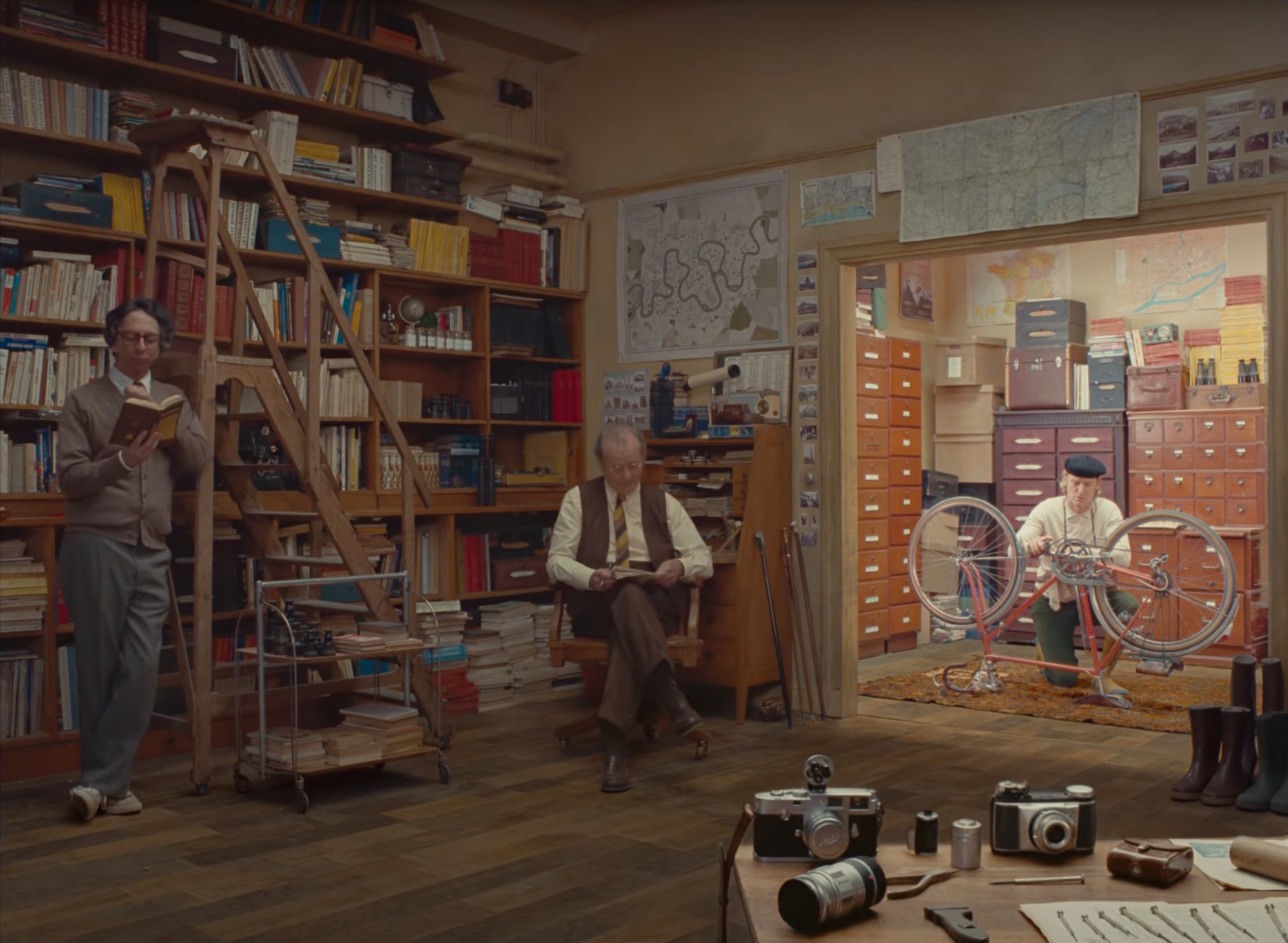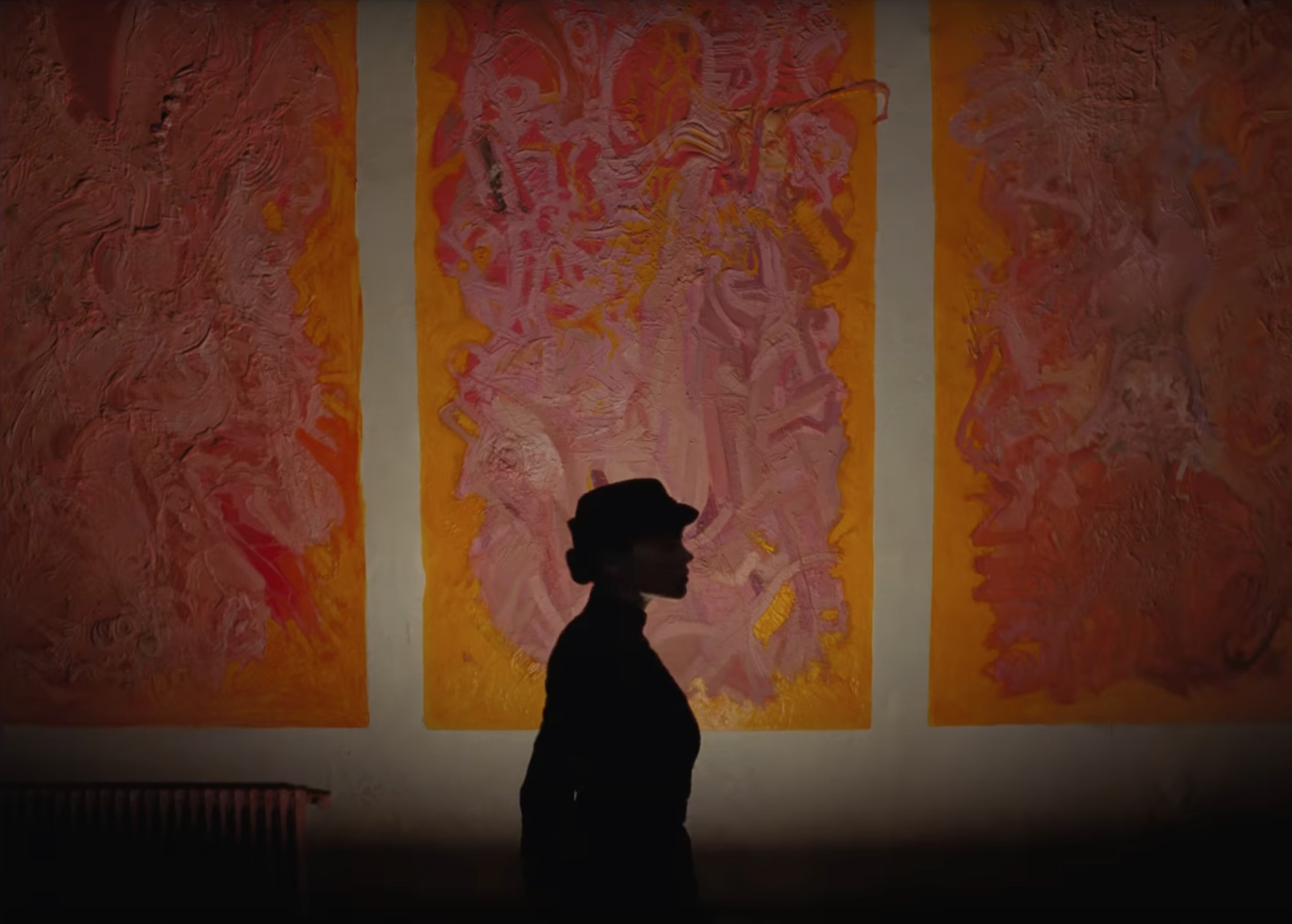Issue:
July 2022
A review of Wes Anderson's The French Dispatch

It is interesting to read articles in the Number 1 Shimbun, each with its own take on a certain issue. Appropriately enough, correspondents appear in a film that caught my interest recently: Wes Anderson's The French Dispatch of the Liberty, Kansas Evening Sun.
The film is an omnibus of stories from the final issue of the French Dispatch, an American magazine published in a fictional 20th century French city. It is truly a film in which you can watch the stories read by each correspondent as if you were reading a newspaper. On the other hand, each story is clearly fictional, including, for example, a chess match between a student activist and the city’s mayor.
The film is a masterclass in creating visual beauty.
First, instead of the camera zooming in on the characters, they walk towards the camera. In Story 1, a guard (Léa Seydoux) persuades a painter (Benicio del Toro) to paint when he can no longer paint. The guard, who appears small at the back of the screen, says: "I can see you are suffering. I can see it's difficult," and walks straight to the camera for 35 seconds. He comes to a position where his chest to face fits in the screen. The actor is neatly filmed from long shot to bust shot. He then says: "You're going to figure out what to paint," while looking at the camera and retreating back to a position where he can again fit into the long shot.
By making the actors walk with unnatural exaggeration, the filmmakers seem to be trying to make the audience understand that they are daring to adopt a unique filming method. Normally, cameras zoom in and out on the facial expressions of actors while they are speaking. By daring to fix the camera and make the actors walk, the filmmaker is showing the audience his determination as an artist.
The same composition can be seen in Story 2, when the treasurer of the student group (Lyna Khoudri) protests to the leader (Timothée Chalamet), for approving the unauthorized allocation of funds for the mass printing of an obtuse, ambiguous, and poetic (in a bad way) document. He gets off the stepladder and approaches the camera. By having more than one person approach, the composition is exaggerated. The same composition is employed in the different omnibuses. It is an intelligent strategy to impress the audience with Wes Anderson's character and to leave his unique mark on cinematic history. He is (and has always been) the only filmmaker today who likes to shoot in such a wonderful way.
Secondly, he employs an unusual method of inserting color images into sequences depicted in black-and-white. As a rule, the scenes of the editor-in-chief of The French Dispatch are in color, but the scenes of each article are in black and white. In Story 1, the scene in which the painter is in prison is a recollection, so the entire film is in black and white. However, only the shot in which the painter unveils his 10 mural paintings in the prison is shot in color.

When the painter’s abstract paintings in orange are on display, people flock to him, describing his work as a historical masterpiece, but then the sequence reverts to a black-and-white. I find this shot amazing because I don't think filmmakers have ever inserted a single-color shot without context into a sequence that is unified by a black-and-white film. The reason for this is probably that mixing a black-and-white film with a color film would confuse the audience, so there was an unspoken recognition that, if a black-and-white film was to be mixed in with a color film, the former should be used only in scenes of reminiscence.
Of course, in this film, the use of color film has the effect of impressing upon the audience that the pictures painted by the artist are wonderful. However, it is amazing that they are actively violating convention to achieve that effect. Rather, it seems to me that Wes Anderson has created a ready-made fact affirming the violation of filmmaking grammar.
This technique is also present in Story 3, in which the police chief (Mathieu Amalric) devises a plan over dinner to save his kidnapped son. Story 3 is also a recollection, so in principle it is a black-and-white film. However, the film's screen is split, with the scene in which he says, "Send a commando unit to secure all access points to the south and west." placed on the right, and the color image of the "canary-colored deviled eggs in meringue" he is eating is placed independently on the left. After that, a total of five color images of delicious-looking dishes, including “kidney, boiled with plums” on the rooftop of the mayor's house and "tobacco pudding, thick cream," are shown to the accompaniment of pop music. Since the names of these dishes are obviously fictional, the audience can understand that this story is one of surreal humor.
That said, the film blends black-and-white and color images without any context, and Wes Anderson subtly creates a ready-made fact that affirms the violation of film grammar with humor.
The film features many other wonderful innovations in cinematic technique. By the way, Wes Anderson is an American, and the United States is a country where innovation thrives. Although it is not a simple comparison, Japan is no longer a country where innovation is particularly flourishing compared to the U.S. and the rest of the world. For example, according to the 2021 World Intellectual Property Organization's Global Innovation Index, Switzerland, Sweden, the U.S. and Britain continue to lead the innovation rankings and have all been in the top five for the past three years.
Japanese film exports have a way to go. My hope is that original, world-class Japanese films will emerge soon.
Pictures from the movie
Yuto Izawa is a Japanese film critic. He has also been the president of the Special Flower Company since 2011.

